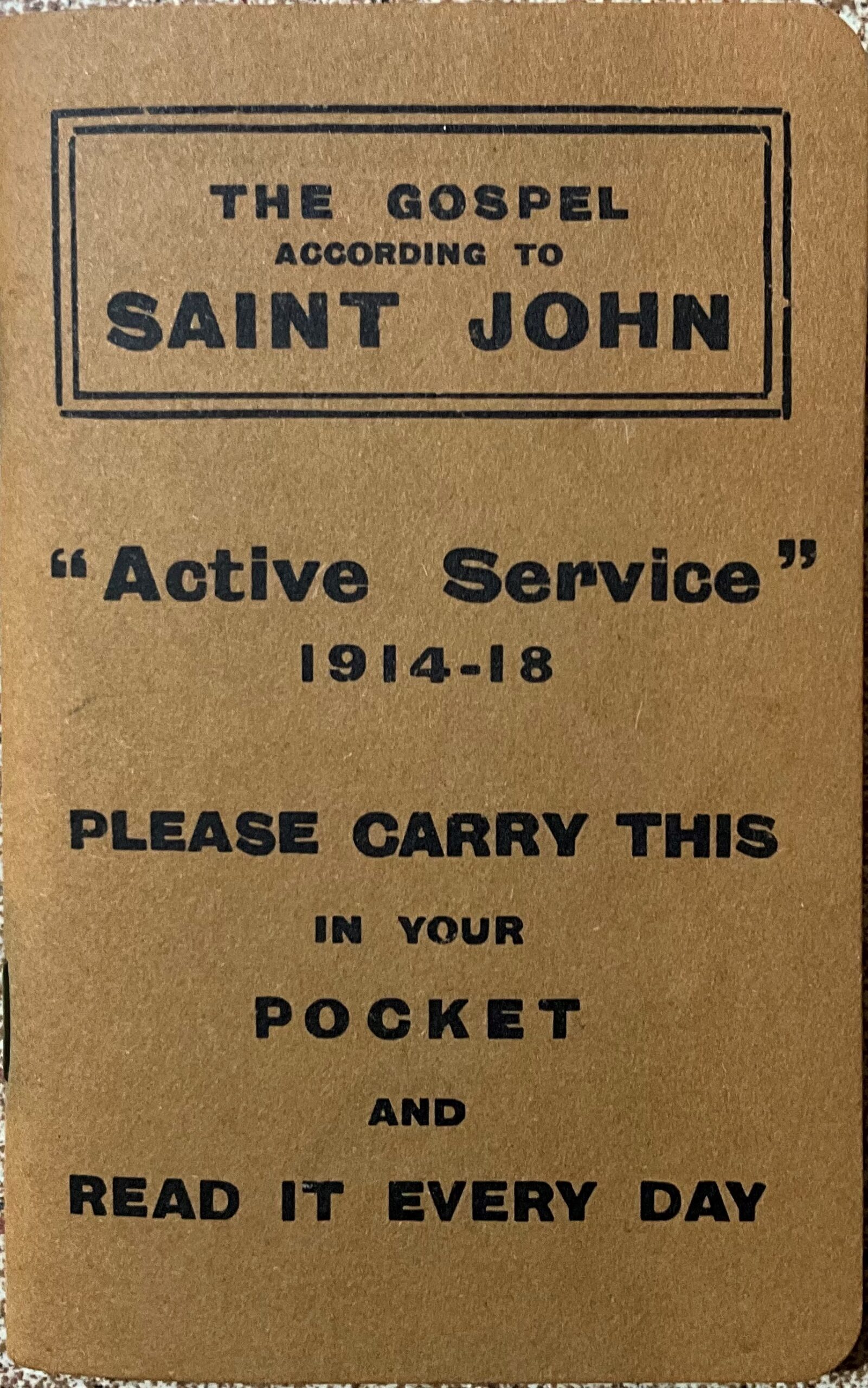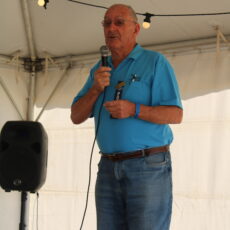At the Narrabri RSL Memorial the Reverend Bernard Gabbott – Vicar of Narrabri Anglican Church – delivered the oration at the Anzac Commemoration Service on April 25, 2025. It was the best I have heard from any Minister of Religion at an Anzac service in many years. During his homily he held up a little brown booklet and went on the tell us of its significance to war.
I must confess I had never had any prior knowledge of this booklet. I wanted to know more.
The Reverend Bernard and his family had been fortunate enough to attend a lecture held in the Thrive Church (formally The Strand picture theatre) in the main street of Narrabri in 2023. The Bible Society did a tour of NSW with historical literature and at the lecture Reverend Bernard grabbed a copy. Turns out that move was fortuitous. The replica booklet was published in 2014 to commemorate the issue of the original handed out at the start of World War One in 1914.
Lifewords, a leading publisher of Christian resources, released the 2014 replica and more than one million copies were distributed across the UK, Australia and the world. Originally known as the Scripture Gift Mission, Lifewords played a crucial role in providing soldiers with Bible resources during World War One. Between 1914 and 1918, 43 million items of scripture, including over 22 million Gospel booklets, were printed in a range of languages and distributed by partner organisations, nurses and chaplains among the armed forces, refugees, prisoners and civilians.
Lifewords does not have a vested interest in war, but wars tend to provide opportunities to any organisation that serves British Forces and the 1914 – 1918 was no exception.
The 2014 replica incorporated stories drawn from letters received during World War One whilst preserving key characteristics of the original. The Active Service John’s Gospels were designed to be carried in the pocket of a uniform, the edges rounded to prevent creasing. The replica also features a handwritten message from Lord Roberts*, Commander in Chief of the British Forces in 1914, as well as hymns that were originally included to enable chaplains to hold services in the field.
The profound impact that these resources had on soldiers during the First World War is reflected in the ongoing effect of this Lifeworks’ Centenary Project. One present day soldier, reflecting on his experience of the replica edition, remarked, “I picked up one of these when I was at a church service as a young lad. Through cadets I always had one of these on me, and now I always carry one as a soldier. In times of great turmoil, this is always a source of comfort for me.”
A World War One British soldier wrote, “When your small Testaments were distributed on the Common at Southampton I, among others, accepted one in a more derisive than a complimentary manner. I little dreamed that I should use it and find in it great consolation in lonely hours. I have learned to realise the great personality of the Savour. When at night I have been on duty alone with Him by side, and the Germans but thirty yards away, I realise that I needed more than my own courage to stand the strain. When the shells of the enemy have burst periodically at my feet, I have marvelled at the fact of still being alive.”
Another soldier wrote that during a reconnaissance mission, a young soldier from his company was wounded between the trenches. A volunteer was asked for to bring him in, and ‘Singing Jim’ stepped forward. He reached the man under the cover of darkness, and began crawling home with his friend on his back. Then a flare burst overhead, revealing their position. A single sniper shot rang out and ‘Singing Jim’ was killed outright.
In his pocket was a long letter to his wife about how he had come to Christ, encouraging her to do the same. The wounded man offered to take it home to England and deliver it in person, telling her how her husband had laid down his life for him. He was given the letter and he did indeed deliver it, but his company had one further request. While he was in England, could he pick up some copies of the little brown book ‘Singing Jim’ had been reading?
I spent six years before self-publishing my book Centenary of ANZAC 1914 – 1918 – Narrabri in 2018. I researched hundreds of Australian World War One service files held by the Australian War Memorial. More than half were of soldiers killed in action. Their personal possessions were collected and maliciously catalogued and sent back to the next-of-kin in Australia. Besides combs, letters and toiletries many had rosary beads, prayer notes, holy medals amongst their possessions. I never saw any small brown booklets. I stand corrected, but I don’t think any of these tiny booklets were issued to Australian troops during World War One.
I sincerely thank the Reverend Bernard Gabbott for securing a copy of this booklet and for bringing it to life on Anzac Day 2025. Lest We Forget.
Footnote:
*Field Marshal Frederick Sleigh Roberts, 1st Earl Roberts VC KG KP GCB OM GCSI GCIE KStJ VD PC (September 30, 1832 – November 14, 1914) was a British soldier who was one of the most successful commanders of the nineteenth century. He served in the Indian rebellion, the Expedition to Abyssinia and the Second Anglo-Afghan War before leading British forces to success in the Second Boer War. He also became the last Commander-in-Chief of the Forces before the post was abolished in 1904. Roberts died of pneumonia at St. Omer, France, on November 14, 1914 while visiting Indian troops fighting in the First World War. After lying in state in Westminster Hall (one of two non-Royals to do so during the twentieth century, the other being Sir Winston Churchill), he was given a state funeral and was buried in St. Paul’s Cathedral.
Richard Barry OAM
Narrabri








